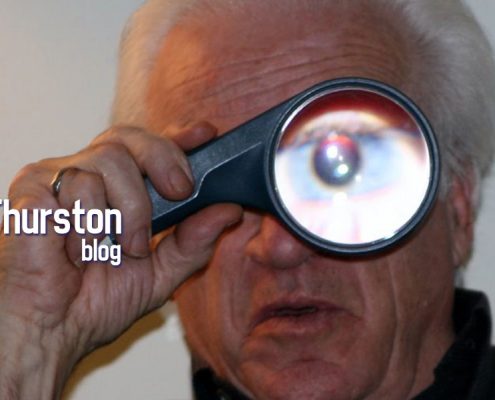WHAT CAN WE LEARN FROM THE HISTORIES OF CHANGE AND INNOVATIONS?
BARRIERS TO CHANGE
Stories abound about the evolution of new ideas, new products and new services.
Frequent reminders include adapt or perish, change or be swallowed up, relinquish the old and move to the new or become a relic.
Equally prominent is the constant reminder that the rate of change is greater than ever before; the magnitude huge by comparison and the outcomes substantial.
An early example of a successful venture is the evolution of the printing press. Communications were most often verbal. Religious institutions employed paintings in places of worship for a largely illiterate congregation and hand written documents laboriously prepared by scribes…. all in all very limiting but satisfactory for those in power who benefited from a universally low rate of literacy. The printing press, after years of difficulty emerged with the capacity to vastly extend the reach of the written word. Resistance arose as anti- communicating organizations saw their power diminishing as the availability of written word increased.
In a short period reading ability increased in lock step with the availability of printed documents. Scribes lost their jobs, printing press manufactures and their employees gained and the public at large benefited from much improved information via the written word.
Turning now to another evolutionary adventure…..consider the story of margarine. This substitute surfaced in Europe because of a butter shortage and a resulting extraordinary price increase. In time, available in North America, the product set in motion an anti-margarine story that plays out to this day. The dairy industry in the United States consisted of many small localized farms largely to serve personal and localized demand. Population growth, transportation, improved separators, pasteurization and refrigeration all contributed to the emergence of large commercial dairies. Dairy Farmers united partly as an anti-margarine lobby group Every weapon available was employed to discourage its usage including threats to health, packaging, taxation, patent violations…. campaigns were nasty, smearing and punitive. Politics entered the fray at every turn.
Which electrical transmission system would dominate, alternating or direct current? Once again competitive forces unleashed a cauldron of claims by both sides, some true some false and some outrageous. The combatants were Westinghouse…..an alternating current advocate and Thomas Edison championing direct current. Much of the credit for alternating current technology goes to Tesla…..acquired by Westinghouse. Edison had an early start. Taking full advantage, he was instrumental in sponsoring localized electrical generating and distribution systems. The battle lines were drawn. For example capital punishment was a subject of much debate including the potential change from hanging to electrification. The question was A C or D C the preferred electrical format? Bizarre experimentation on soon to be executed criminals was undertaken. Safety was an issue as well. Trials on live dogs produced nothing definitive. Well into the debate Edison realized the superiority of AC was a clear winner primarily because power losses in the transmission systems were much lower. Edison and his supporter’s deployed stigmatization to spark public objection to AC and to protect their investments and patents in DC-related installations. The delay extended the life for certain DC applications, thereby extending the profitability accruing to Westinghouse.
A certain class of new technologies encounter significant barriers when the product extends beyond existing regulations, when outcomes can potentially inflict environmental harm and when the consumer may be at risk. The example of growing genetically engineered salmon tells the tale. In very elementary terms the process alters the DNA, in this case accelerating the salmon’s growth rate. The road to commercialization was particularly onerous because it was ground breaking in every respect. Consumer acceptance remains problematic.
Music delivery has traveled through a renaissance from in person listening only, to rudimentary replication, to wireless, to records, to tapes to wireless digital devices and its many derivatives Along the way the role of the performers and how they are compensated moved from cash, to paychecks, to royalties based performances to a format still evolving. At times the performers were left out of compensation altogether. At present a complicated and controversial system is in place. Technology changes are the path for a complete disruption of the entertainment industry not always favouring the entertainers.
Once in a while a startlingly new discovery occurs which is immediately embraced with little or no controversy. An obvious candidate is antibiotics and in particular penicillin which to this day remains a vital pharmaceutical for combating infections.
Alternately, a seemingly nonintrusive invention eventually inflects great harm. An example is dichloro-diphenal-trichlorethane, soon to be labelled DDT. Seen originally as an effective weapon against malaria, evidence soon surface by inflicting severe environmental and health outcomes on animals and vegetation. The pesticide was banished from almost all applications.
One all-encompassing technological evolution is that of communications. As soon as the first telegraph message was sent the pony express was never the same again. Each transition was embraced with few objections. Telegraph to wireless to radio to telephone to television to wifi quickly became house hold items. For the first time barriers have surfaced because the conveniences of communicating are giving way to loss of privacy and intrusion.
Any review of barriers would be incomplete if the subject of denial was not included. The denial may be intentional as entrenched energy producers are motivated by protecting their lively hood. Separate but closely associated is a reputational loss resulting from the negative consequences of a lifetime career.
LET’S TALK ENERGY
For five centuries the energy industry has undergone a continuous succession of changes. Today’s menu reflects the nature of the industry, the complexity, the ever increasing demand, and untold geopolitical fervour. There is no component of our universe that is not influenced by energy generation, transmission and consumption.
Applying the energy path of change borrowed from the examples of printing presses to margarine to electrical generation to genetically engineered salmon to music to antibiotics to pesticides in comparison to the evolution of energy will help in understanding where we are, how we got here and assist in achieving a path forward.
For centuries manual labor was supplemented by flowing water driving grist mills, canal boats, river boats, rail cars, draft animals, wind, and inclined planes. Collectively supplementing human labor with these and other methods was substantial and a credit to the world of ingenuity.
Introduction of coal to replace wood and peat required new technologies for extraction, transportation, storage and combustion. Ventilation became significant as the smoke from burning coal required chimneys. Prior to that products of combustion exited directly out of open vents in the ceilings and open fireplaces were universal. Heating relied on radiant energy which consumes major amounts of coal to realize any significant effect. As a result housing designs were forever altered to include iron stoves and furnaces.
Energy to supply light has followed an interesting path. Early sources include wax, coal oil, coal gas, and combinations of almost everything that would burn. Oil from whales became a global favourite. Combustion was odourless, clean and relatively bright. The industry prospered, growing to a major economic force. Harvesting expanded across the world as easily accessible animals dwindled. Operational and capital costs increased Gas from coal evolved, providing adequate street, industrial and domestic illumination. The lamplighter was a familiar sight.
A viable competitor emerged. New on the scene…kerosene derived from crude oil was a welcomed entry to the lighting world. Whale oil was soon eclipsed. The American Civil war raged at the time. Financing was needed and an import tax applied to whale oil, enhancing kerosene’s competitive position. An early indication of the geopolitical nature of the energy industry.
THE BEGINNING OF BIG ENERGY
Delivering a labor saving device that far exceeded human capacity to do work was a consistent objective. Low and behold it appeared in the form of the steam engine. The invention was a piston equipped machine that employed steam to move pistons back and forth which fastened to a power take off that transmitted energy to a wheel.
This is the point of entry where today’s mechanical energy really takes hold. Coal had worked its way up the ladder principally for household radiant heating now called upon to supply energy for generating steam. A very early use for the steam engine was supplying energy to drive water pumps to remove water that flooded coal mines. A new and improved version was very quickly incorporated into propelling systems for locomotives, pumps and ships.
Well into the future were the electric generator and the electric motor. Imagine the future for devices that awaited for something that would light and energize the world.
Adapting, flowing water was another energy source that drove electric generators. Hydropower quickly took its place in the energy world.
In short order, coal was the energy source for generating heat, electricity, industrial applications, and certain transportation components. In due course, refined crude oil yielded gasoline and diesel fuels for feeding the fast growing internal combustion engine.
These two unrelated events added up to a prodigious growth in demand for energy. The negative impacts of solid, liquid and gas fossil fuels is only now coming to roost across the world.
The coal saga, still very much in play ,far exceeds any fictional story. From child labor to abhorrent working conditions to threat to health to family dissolution, mining coal was beyond the pale.
GEOPOLITICAL ISSUES
There are geopolitical and industry characteristics of consequence. For one thing the supply and demand of oil are weapons of war. Just prior to World War 1 Winston Churchill negotiated a supply agreement with Saudi Arabia to supply crude oil to be refined and used to fuel Britain’s navy, replacing coal. Cost was not an issue. Japan undertook war, partly to establish a supply of crude oil from Burma and Indonesia. Similarly Germany needed oil to sustain the war machine and invaded the Balkan countries. Iran and Venezuela are undergoing oil shipment embargos as a punitive action for certain political activities. Russia and Saudi Arabia conspired to reduce the price of crude oil produced from shale. Today we are witnessing sabotage as a way of curtailing delivery. The Russian invasion of Ukraine is horrific. Once again energy is at the forefront.
Subsidies will forever be debated on both sides of the supply demand equation. Suffice to say that helping or penalizing the crude oil industry happens both ways. Oil for transportation is now fundamental to our economies. When the price exceeds what the consumer can afford governments will provide the difference.
SUPPLY AND DEMAND
The demand for energy from oil has favoured the suppliers most of the time. The industry has had the long-term advantage of a steadily growing demand. Black gold is a common description. News about discoveries are traditionally celebrated. Countries new to the international oil market gain in stature. National Oil Companies control fifty five per cent of global production leaving national interests ahead of economics. Economists call this structure an oligarchy.
Real competition is found in finding, producing and shipping the commodity. This is not to say that the required technology is trivial in any way. Abilities to find, develop and deliver fossil fuels are breath with increasing efficiencies at every turn, accompanied by gigantic capital expenditures. For transportation’s entire life, with very slight intrusions from electricity and steam, fuel derived from crude oil has been the exclusive provider of energy.
Although much is made over product differentiation among gasoline providers the internal combustion engine operates equally well on all the readily available gasolines and diesel. There is no real product differentiation, sometimes brief price competition will surface.
The concentration of commodity ownership allows for producers, to control price and production levels. We all await with breathless anticipation for the next OPEC meeting for news about pricing and volumes. The results never favours the consumer.
Transportation and petrochemicals live on derivatives from crude oil. These applications originated from outside of the fossil fuel industry. Similarly petrochemicals originate from unrelated sources. A little luck never hurts.
Deriving energy from coal is a very long and storied tale. To this day this commodity dominates in the provision of energy for electrical generation. Certainly the first of any consequence; readily available across our planet; relatively easily produced in open pits and below the surface material handling accommodated using the technology of the day; provides generous amounts of heat per unit and readily available.
Coal remains fundamental for generating electricity, lighting, transportation and industry.
These attributes have disguised the disadvantages, particularly with respect to products of combustion including Sulphur dioxide, carbon dioxide and particulates. After years of controversy process improvements result in the removal of sulphur dioxide and in some cases the particulates. Carbon dioxide emissions remain a significant problem. Existing electric power plants employing coal are barriers to new natural gas fired plants because many have years before retirement is necessary, economics favour coal over natural gas or is not available and geopolitics stand firmly in the way. As always the economically challenged countries have great difficulty overcoming these fault lines.
Moving up the daisy chain we enter the world of natural gas that has fewer carbon molecules per unit of energy. A most welcome commodity, it is plentiful and comes with associated products that feed the petrochemical industry and frequently sulphur, again a useful material in its own right. While carbon dioxide is an unwelcome byproduct upon combustion, natural gas possesses greater specific heat resulting in a more efficient outcome. An added benefit is liquefaction, thereby facilitating global access. At this time in the world of energy natural gas is viewed as a vital part of the supply world. In some quarters it is referred to as transitional source towards a carbon free world.
Back now to tried and true supply we have hydropower, fission, biomass, geothermal and fuel cells. These are proven sources each with their own advantages, disadvantages and growth potential. Controversy erupts when expansion plans surface, all with legitimacy and plausible reasons for not going forward.
Still in the wings are hydrogen and fusion.
What we have accomplished is incorporating solar and wind with a permanent place in the supply chain, notwithstanding negative externalities.
The various processes to produce fossil fuels are in and of themselves generators of greenhouse gases. Producers are making substantial efforts to reduce and capture carbon dioxide and methane.
What we have not accomplished is any substantial reduction in using fossil fuels as part of energy generation.
The lowest hanging fruit remains using energy more efficiently.
Overcoming old and antiquated energy distribution systems are major barriers including liquid fuels and electricity.
Introducing surge capacity is vital to employing electricity on a much broader scale than at present analogous to how liquid fuels are held in inventory.
Finally, once carbon dioxide and methane are realities resulting from energy generation, capturing them remain part of the solution. Carbon capture at source is making its way into the equation.
Last but certainly not least remains the intersection of government policies with energy and with consumers to accomplish mutually satisfactory solutions.
MORE ON THE BARRIERS TO ENERGY TRANSITION
Experiences hint at just how difficult these are.
In the case of the printing press opposition grew from those organizations with vested interests in maintaining the status quo by discouraging increase in the level of literacy, by the scribes of the day and by document producers. Developing the printing press turned out to be a formidable and expensive task resulting in several bankruptcies.
Margarine suffered from running into dedicated opposition. Dairies united to discourage consumers using every tool in their tool box. Politicians reliant on the industry took up very destructive activities including sponsoring anti-margarine legislation and press leases that put today’s social medium to shame.
The competition between AC and DC electrical transmission methods was blunted by Edison’s energetic delaying techniques extending the dominance of D C usage while he converted his installations from D C to A C.
Potential health risks presented by adjusting salmon’s DNA are denied by the proponents and vigorously opposed by traditional suppliers.
Music providers suffered by losing substantial amounts of income because of the transition from personal entertainment to royalty payments that were impossible to collect.
There is some similarity considering the birth of antibiotics and the automobile….both were greeted with open arms although the auto initially less so as opposition came from the livery industry and citizens concerned with safety issues.
Comparing major shifts in energy supply with communications has some commonality in that significant negative outcomes have taken time to become apparent…..communication because of privacy and false information and the introduction of prodigious amounts of man-made carbon dioxide into the atmosphere.
TO SUMMARIZE
Provision of energy from crude oil benefits producers. There is a concentration such that pricing and supply are influenced in their favor. Until this time any competition for the driver’s dollar has been decidedly sparse. Now for the first time a new energy source is viable.
The geopolitical issues insure the continuance of a very complex and uncertain future.
Technology and entrepreneurship are coalescing to build a very significant new energy world.
Introducing a new and impactful energy source and system faces formidable technological, environmental, economic, political and social barriers.
A TIMLEY EXAMPLE
The world is in the midst of adding electricity in significant amounts to the transportation industry. By now we are all aware that this is a change of considerable consequence. So as Julie Andrews sang in the Sound of Music…”Let’s start from the Very Beginning”.
There are two mainstreams providing energy for vehicles. The first source is crude oil that fires the internal combustion engine. The second energy sources are primarily solar, wind, hydropower, nuclear, natural gas, crude oil, biomass, fuel cells and coal that fires electric motors.
Sophisticated systems hoist crude to the surface from where it will travel employing a combination of pipeline, rail, truck and ship, to a refinery anywhere in the world. Gasoline and diesel will be produced moving on to the internal combustion engines and converted into heat and mechanical energies.
The logistics of the second energy sources are different. Fuels derived from crude oil, natural gas and coal move in the traditional ways are processed before moving to the generator and then to the distribution system. Energy derived from solar, wind, hydro power, biomass, geo thermal and nuclear goes directly into the distribution system.
One notable difference between systems is the ability to inventory the energy source….certainly not a problem for gasoline and diesel. The system delivers continuously with ample storage along the way. Storing electrical energy is a far different story. It is only with the evolution of batteries that now make this workable. A second barrier is the transmission of the fuel be it electricity or gasoline to the motor. The traditional way is the ubiquitous “service station”…..employing a process that has not changed very much from the time immemorial. Charging stations of various kinds are now springing up across the world.
The electric motor’s output delivers more energy per unit of input than the internal combustion engine. This constant is often referred to as greater efficiency.
This takes us to the core issues of electrifying vehicles. As is often the case this did not originate from the ensconced providers. It took the determination of a somewhat brazen individual to initiate a project which is gripping the world in a manner hardly imagined a short time ago.
The energy will be sourced from renewables and by fossil fuels. Externalities result from employing all sources….there is no free lunch. By now we are more than aware of the negative consequences of generating energy from fossil fuels. Carbon dioxide, and related greenhouse gases, systems falters and failures all have negative consequences.
Renewables have their own downsides, not to be sneezed at Fission, hydropower, have real and potential disadvantages, solar and wind generation are intrusive. Energy from fusion and hydrogen both have unique issues with debatable futures, certainly in the short term.
Batteries suffer from harvesting components that are in short supply. Recycling implementation initiatives well underway.
Common to any and all ways of sourcing energy is a very complicated delivery system.
SOLUTIONS (?)
Crude oil supply is concentrated among a small number of countries in which case price and volume are easily controlled. OPEC is a textbook example of how producers conspire to distort a free market for the suppliers benefit. Witness the Russian-Saudi Arabian conspiracy to combat the emergence of oil from fractionation and the current volume cuts even as Russian exports are in major decline.
Disrupting a cartel of this nature with new and innovative methods is difficult. However the emergence of electricity as an energy source for transportation is now making inroads. For the first time an alternative for the consumer is viable and available.
Interplay among politicians, existing energy producers, new energy suppliers consumers, financiers and technologists is intense. Tag name….geopolitics. Outcomes include armed conflict, jurisdictional disputes, subsidies, policies, and taxation.
Entrenched providers have a great deal at stake. Reactions vary. Some are responsive in anticipation of legitimate competition, some are maintaining the statuesque, and some are reported to be taking all manners of actions to protect fossil fuel domination.
Hard science about influence on the earth’s ecosystems by all energy sources improve at every turn.
Opposition to changes know no boundaries and are ubiquitous. They always have some degree of legitimacy.
Policies are very influential. They depend on political ideology, beliefs, economics and values.
The key to successful outcomes centres on new ways to provide energy in the most efficient and least intrusive ways.
A NOT SO BRILLIANT CONCLUSION
The only undeniable observation….energy in transition is the singular constant, without debate. Throughout energy changes have been erratic, matters of convenience, with no malice forethought, generated unintended consequences, created or destroyed political aspirations and some were more or less accidental.
To be sure extensive economics, rates of return and careful engineering have been incorporated into any energy project of significance. From an historical vantage these initiatives have not stopped the condition of today’s energy portfolio. Whether the issues are generation, transportation or application, they are subject to abandonment, alteration or replacement.
At this juncture real changes are in the line of sight. Very serious science and billions dollars, both private and public, are committed to a system that will adjust any or all of the moving parts. As always these will never be the journey’s end….simply transitional.















